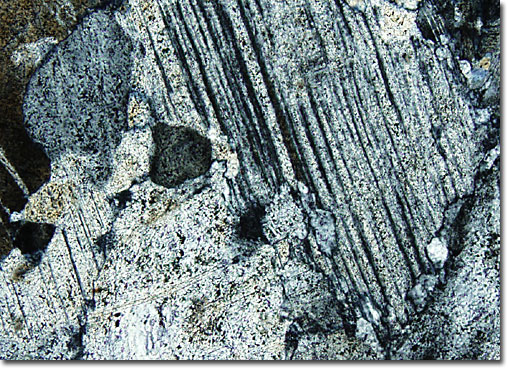|
Commonly colorless or white, barite may also be found in hues of reds, blues, yellows, and greens. The mineral varies in crystal habit as well, sometimes occurring in large, tubular forms, and other time in plates or concentric aggregates. In the latter instance, the crystal pattern is often likened to that of a flower, and when these formations exhibit a red tint they are often called “desert roses.” Other varieties of barite, which do not usually exhibit such a distinctive appearance, are frequently confused with other minerals, such as celestite. Indeed, similarities are so strong at times that flame tests are required to determine the true identity of the mineral.
|
